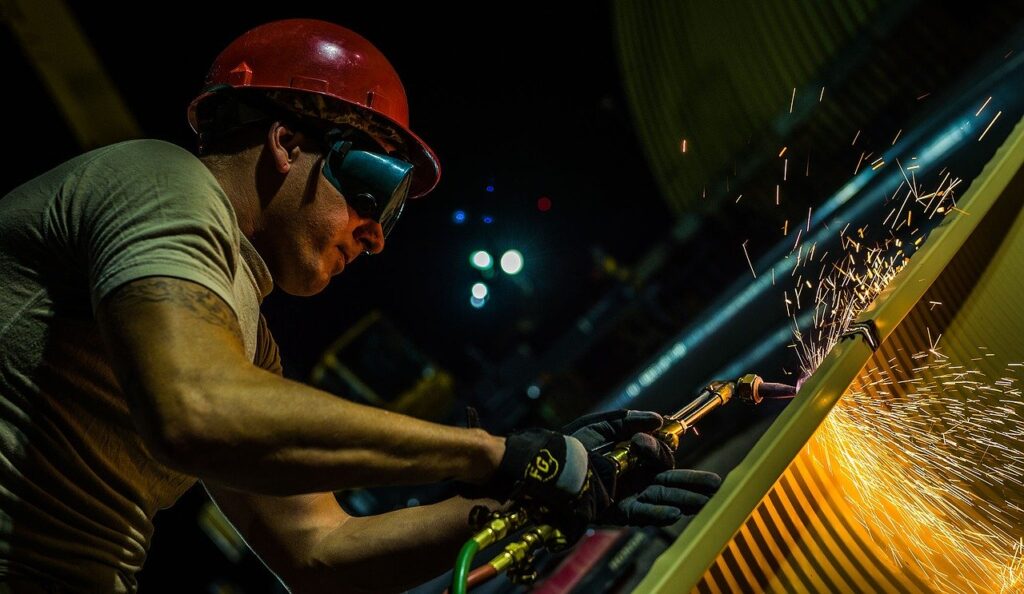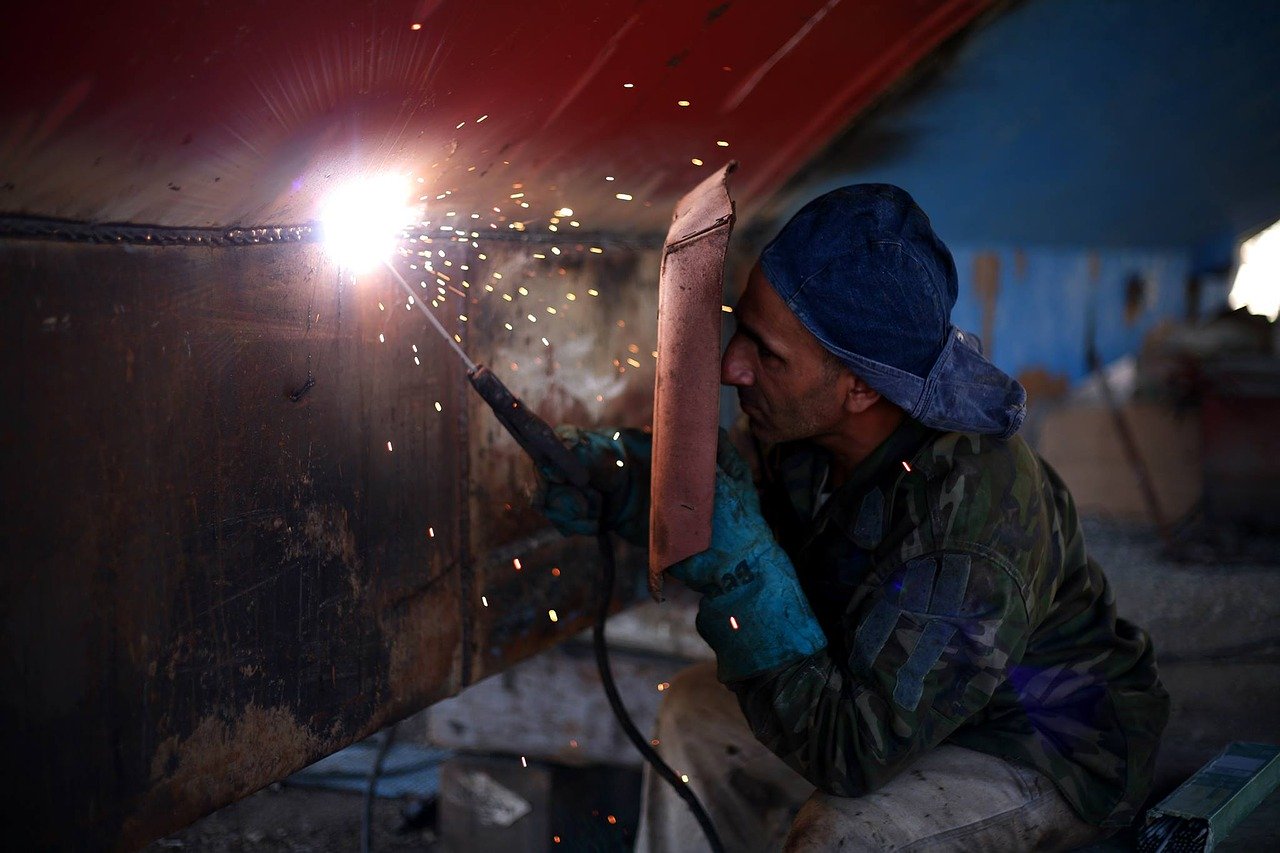Accidents are called accidents because, well, they’re accidents. They are unfortunate incidents that happen unexpectedly and unintentionally, typically resulting in damage or injury (Merriam-Webster, 2017). Although they happen by chance, this chance probability is always high in the construction sector. In fact, of all the industries, construction industry accidents has the highest of fatality rates at more than double the average of all the other sectors.
Which leads us to the unpleasant minor accidents that happen to be immeasurably more. It is no secret that the construction workplace is not exactly health and safety heaven — in fact, it is a hazard nightmare where everything wrong you can imagine could happen.
In this constantly changing working environment, however, employers have made it a point to make everyone aware of the hazards in the work site. In fact, it has been a part of the construction practice for employers to take it as their duty to look out for their employees, visitors, and anyone who may be affected by their activities.
Utmost site management is a requirement before starting any building project, and it includes proper implementation of appropriate accident prevention measures. The management always carries out risk assessments to identify hazards and risks before any construction project.
This article lists down the major hazards that are typical in a construction site and some tips on minimising their occurrence.
Falls and heights
Building construction, usual infrastructure projects, and demolition works routinely involves tradesmen working at height. Height-related work fatalities and injuries account for countless accidents per year. The odds for height-related risks are increased by added access and mobility restrictions. To counter this, companies usually provide (safety awareness) training and safety equipment for employees who are required to work at height.
Slips and trips
Aside from falls, slips and trips are a common occurrence in the construction site. Adding to heights, uneven surfaces, obstacles, slippery surfaces, trailing cables, holes and random materials are spread everywhere on the site, so it isn’t a surprise that slips and trips happen almost daily. Every year, slips and trips cause around 1000 injuries that involve fractured bones and dislocated joints in building sites. Reducing risks in this area is to involve the workforce in identifying problems and “near misses” in the workplace. Signposts and proper workwear and footwear and safety gear always help reduce risks.
Moving objects
The Infrastructure Health and Safety Association reported an average of 2,000 lost-time injuries from falling objects over a five-year period. A construction site is alive with moving objects, constantly changing with various equipment lifting heavy loads overhead or dumping loads everywhere. Hazards are therefore inherent. The most common objects that fall range from steel beams to small hand tools, and cause various injuries of bruises, fractures, strains, and sprains. Limiting the number of injuries related to moving objects include two types of controls: physical controls that stop objects from falling or falling very far and procedure controls that change the way tradesmen work so that objects can’t fall.
Noise
Noise is one of the major “silent” hazards. Noise does not have the shock value of a fall, but repetitive and excessive noise can cause long-term healing problems. They can also be a dangerous diversion at work that could lead to other accidents. Earplugs do not provide total protection against hearing damage. By law, companies are required to adhere to noise regulations which include implementing and documenting comprehensive noise risk assessments and issue appropriate personal protective equipment.
Handling
In any construction site, materials and equipment are routinely moved around. Either done manually or mechanically, some degree of risk is involved. For manual or mechanical tasks, adequate training, competency tests, and licensed handling and operating must be strictly complied with and properly recorded and kept for verification.
Blue finger
Blue finger is a painful and draining disease of the blood vessels, nerves and joints. It’s a common industrial disease caused by the prolonged use of vibrating power tools and ground equipment. It’s medically referred to as the hand-arm vibration syndrome. People working with vibratory tools should be provided with proper protective wear and have the machine or equipment they are operating properly maintained. Companies should also provide regular check ups to reduce the risk.
Collapses
Collapses are more of accidents waiting to happen. Every year, serious injuries and fatalities result from collapsing trenches and excavations. Unintended collapses are associated with demolitions sites, scaffoldings, and partially completed buildings. To reduce risks, precautions have always to be established before any work starts.
Asbestos
Everyone thinks asbestos was just a problem in early construction and history had closed its book on it. However, according to a UK report, in the UK alone, an estimated 500,000 public buildings have asbestos materials lying around undisturbed and forgotten. Both employers and employees should be aware and prepared in case they come across harmful materials that contain asbestos.
Airborne materials
The construction site is eternally dusty. Usually, the dust found in the construction environment contains a mix of harmful fine powders and fibres that can mainly damage the lungs, which can lead to chronic obstructive pulmonary disease, asthma, silicosis, and other lung diseases. Personal protective equipment is not enough; companies have the legal duty to impose and ensure that these protective equipment are being used. Employees who fail to use their issued PPE may be subject to disciplinary actions or may even be fired.
Electrocutions
Statistics say that on average, three workers are electrocuted every year in the construction industry while doing refurbishment work on commercial and domestic buildings. Working near power lines and cables add to the risk. Workers who are not qualified to work as electricians but carrying out electrical work are also increasing the number of electrocutions in the industry.
Safety commissions have reduced risks by implementing the use of non-conducting materials in the vicinity of power lines and cables and by requiring safety training. Electrocution hazard warning labels also greatly reduced this problem.
Heat
Believe it or not, heat-related injuries like heat stroke and heat exhaustion also contribute to fatalities in the construction workplace. It’s the most preventable of all work-related risks. Periodic breaks and keeping hydrated all throughout the day minimises the risk of developing these conditions.
Safety first
Written safety policies significantly reduce unnecessary accidents in the workplace. A proper safety program that provides daily and weekly safety information and reminders to the workforce is always ideal. Investing in proper protection equipment and routine maintenance of machinery and tools always save lives (and companies) in the long run.
Complement this particularly informative article with this equally helpful piece that discusses some valuable tips on construction risk management. You might also want to check out project management systems for managing construction risks. Mitigating hazard and danger risks is only one aspect of improving construction performance. Learn more about improving overall productivity by downloading the free ebook, The Circle of Productivity.



